Summer Food – Kānga
Te Puna
Atua: Rongomātāne.
Hurakan (Mayan).
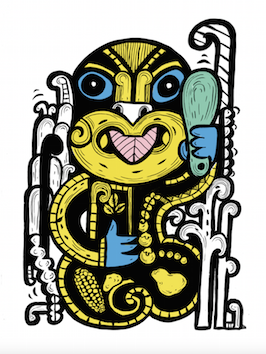
Whakapapa
The whakapapa of Rongomātāne.
Rongomātāne Whakapapa (PDF, 49 KB)
Pūrākau
Ngā Kōhine e Toru
Nā Te Rā Pōmare i tuhi, nā Hēni Jacob i whakamāori.
In the book Te Whakatipu Kānga, whārangi 3 (item number 710880)
or as App or PDF at:
http://hana.co.nz/online/te-whakatipu-kanga/
Waiata
He Rourou Mā Koutou
Download words and waiata at:
http://tereomaori.tki.org.nz/Reo-Maori-resources/Hei-Waiata
Karakia
"Nau mai e Rongo
Nā Nuki Tākao i tito.
Nau mai e Rongo
Nau mai e Rongo
Tau mai e Rongo
Tau mai ko te āio
Tau mai ko te aroha
Tau mai ko ngā hua o te ora
E Rongo whakairia ki runga
Kia tina, tina
Hui e. Tāiki e."
Whakataukī
Nāku te rourou. Nāu te rourou. Ka ora ai te iwi.
He Atua! He Kōrero!
Peaceful Words
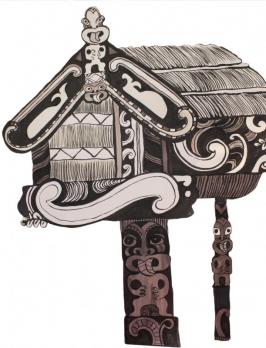
Rongomātāne
Āio
Aroha
Hua o te ora
What you need
- Copies of He Kupu Rongomau 1 and He Kupu Rongomau 2 printed onto card and cut into sets
He Kupu Rongomau 1 (PDF, 12 MB)
He Kupu Rongomau 2 (PDF, 4 MB)
What you do
- Play a memory card game. Each player turns over two cards at a time and keep any they need to make a set of 4 different cards. The goal is to find one of each word/picture card to make a set and win.
- Every time a player turns over a card they have to say the word aloud and put it into a sentence. You can scaffold this activity by writing some cue words and/or contexts on the board that they could use.
Heart Cards
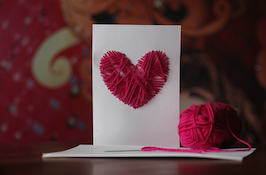
Make heart string cards for Valentine’s Day, Mother’s Day or an upcoming birthday.
http://www.hellowonderful.co/post/MAKE-STRING-HEART-YARN-CARDS
What you need
- Colourful wool
- Thick card cut out to the size you want and folded in half (the heart will be on the front and space to write on the inside)
- Darning needles
- Pencil, rubber, scissors
- Heart template
- A list of sight words they could use to express feelings and thoughts (and occasion appropriate)
What you do
- Trace the heart template onto the inside front of the card.
- Punch holes along the heart shape with a needle.
- Thread the wool onto your needle and knot the end.
- Starting from the back, thread the wool through the holes in various directions.
- Cut off the wool on the underside and tie up.
- Students write messages to their mum/valentine/birthday person using the sight words and read them aloud at the end of the activity.
He Rourou mā Koutou
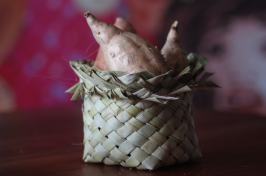
The rourou is a woven basket traditionally made from harakeke, in which cooked food was placed, especially food for visitors. Rourou are still a symbol of giving and sharing, particularly of harvesting, caught and seasonal foods.
Learn the Waiata
- Use your own place or school name instead of “Pōneke”. Sometimes the word “manuhiri” is replaced by “iwi”.
- Use the sentence structure “Nō … nei mātou” and put your kura or town’s name in.
- Teach a lesson on “koutou”, “mātou”, and “rātou”.
- Play an active game where you give instructions and the groups have to move e.g.
– Kei te aha mātou/koutou/rātou?
– Kei te … mātou/koutou/rātou.
– Kei a wai te pirori?
– Kei a mātou/koutou/rātou.
Nau mai e Rongo
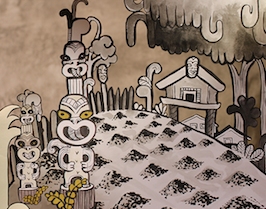
Ako ā-Kākā
Teach the karakia by rote and practise daily. This is a good karakia for starting the day. Practise reciting the karakia as a whole group and in time students can recite the karakia independently.
Nāu te rourou, nāku te rourou, ka ora ai te iwi
This whakataukī is also about rourou and can be used to build on the value of manaakitanga and the symbolism of sharing and giving to empower and enhance the mana of all.
- Talk about the whakataukī with the class and learn it together.
- Have the students add this (or other appropriate whakataukī) to the end of their mihimihi as a closing thought. You can also ask them to write the whakataukī in big letters on card and illustrate it appropriately.
Make a Rourou

- Students make and decorate their own food baskets (e.g. paper plate woven baskets) and put ‘food’ (actual food, cut out card pictures or clay models of fruit & vegetables) in them. This link provides instructions.
https://www.youtube.com/watch?v=ZhAqPwx97jo&feature=youtu.be
- Working in pairs, they can then practice saying the whakataukī, focusing on using the possessives, ‘nāku’, ‘nāu’ and ‘nāna’. This activity will also incorporate the locatives ‘tēnei’, ‘tēnā’ and ‘tērā’.
“Nāku tēnei rourou.”
“Nāu tēnā rourou”
“Nāna tērā rourou.”
Possible Assessment Opportunities
Students can:
- Recite the karakia at shared mealtimes.
- Perform He Rourou mā Koutou as a group.
- In groups of three use the following sentences whilst holding their kai-filled rourou.
“Nāku tēnei rourou.”
“Nāu tēnā rourou”
“Nāna tērā rourou.”
